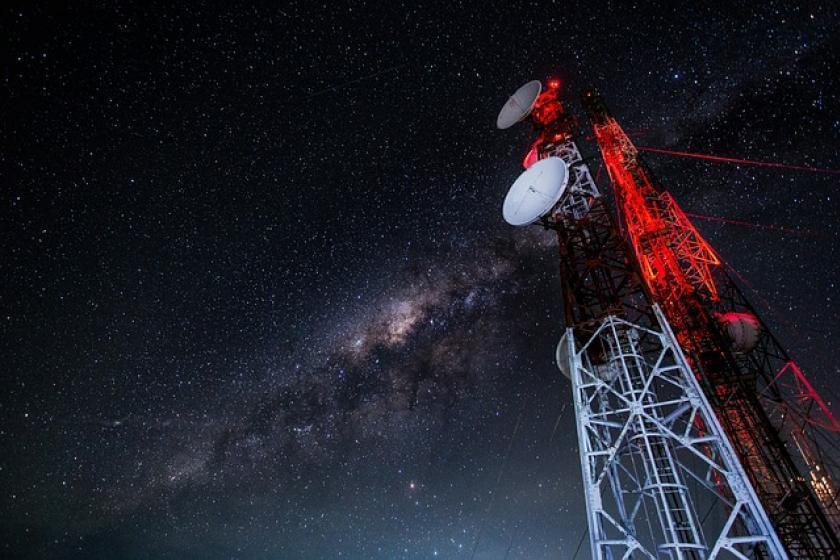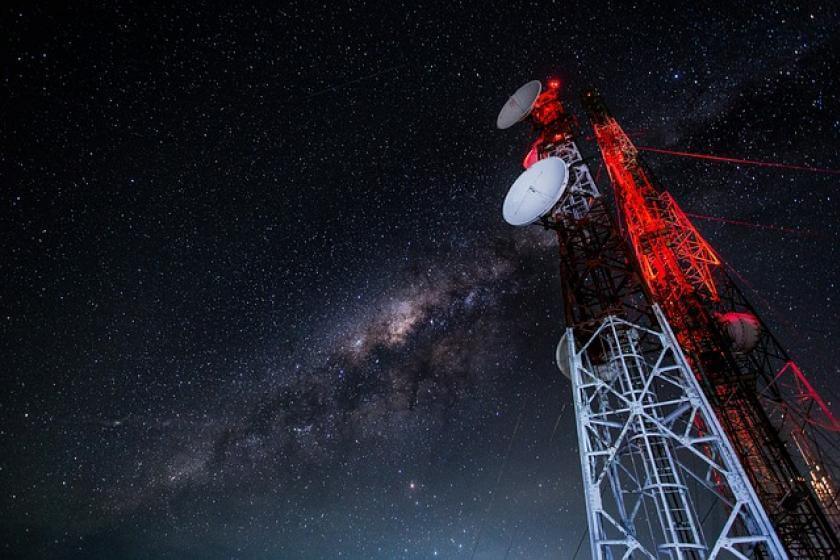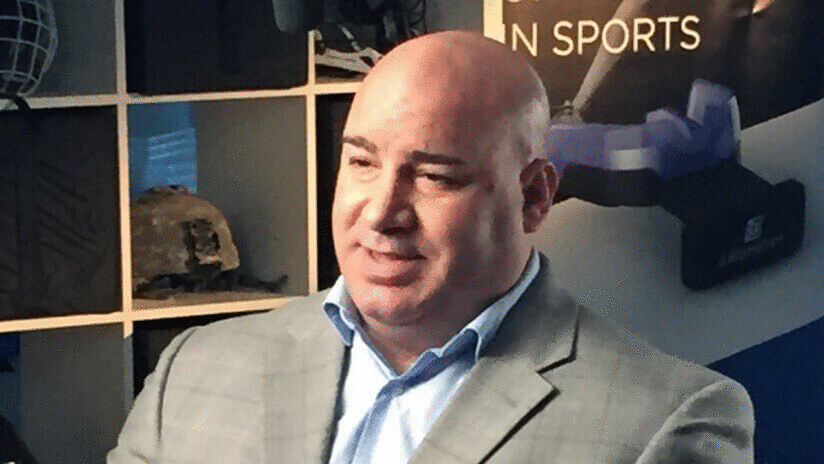Articles
Sample Articles from Bob Wallace.
Read More about Bob.
Low-Power WANs: A 2020 Enterprise View
- Details
- Published on 15 January 2020

Source: Pixabay
LPWANs 2020: Choices, challenges, and breakthroughs on tap for IT managers.
Enterprise IT managers can expect to see a more robust series of new capabilities, choices, and lower prices for LPWANs, which companies have used to monitor and manage valuable assets over long distances.
The tsunami of 5G headlines and hype in 2019 has overshadowed companies’ use of the low-speed, low-cost, long-life networks that use inexpensive sensors and radios.
Early on
Businesses have used LPWANs to connect fixed and far-flung resources. Attached units regularly send a small amount of data over low-speed wireless connections using sub- $10 radio units to a central location for monitoring and management. Interest in LPWAN services spans vertical industries. Others include oil and gas, utilities, healthcare, logistics, transportation, and manufacturing.
A series of options have taken root, many based on different technologies. Early offerings emerged outside the U.S. But most U.S. cellular operators deliver LPWAN services in the last few years.
Defining LPWAN
LPWAN has been generically as an umbrella term to refer to all low-bandwidth, low-data rate, and low-cost networks that handle the above-mentioned tasks. But under this heading, however, are numerous technology approaches that are quite dissimilar, falling into two categories. The first is called LPWA and contains proprietary technologies that don’t use cellular connectivity and work in unlicensed frequencies. They include LoRa, a radio modulation technique used with the LoRaWAN protocol, and Sigfox, a company whose products use a proprietary protocol.
More recently, options in a second category have emerged. They use cellular connectivity in licensed frequencies and include Narrow Band -Internet of Things (NB-IoT) and LTE Cat M offerings.
Reviewing 2019 progress
At the close of last year, AT&T, Verizon, and T-Mobile had launched what I call LPWAN services in the U.S. These offering target enterprises an alternative to the DIY option and can include the option of renting monthly the radio and battery devices that transmit remote data to a central location.
Dynamic Spectrum Sharing: Beyond Carrier Benefits
- Details
- Published on 15 January 2020

Source: Pixabay
DSS is expected to speed 5G service rollouts. What should enterprises expect?
Wireless carriers are counting on a promising spectrum sharing technology to bridge the gap between 4G and 5G in a move that should accelerate the deployment of 5G services in 2020 and beyond.
Dubbed Dynamic Spectrum Sharing (DSS), the technology enables wireless operators to use 4G spectrum to support the new generation of services, thanks to a software upgrade and 5G New Radio (NR)-capable radios. U.S. wireless operators are talking DSS, and a growing number of infrastructure vendors are taking action.
What it enables
With DSS, network operators can dynamically share spectrum among two different technologies, such as 4G and 5G. Today, these operators must split spectrum, and dedicate separate chunks to different cellular technologies.
DSS enables the sharing of spectrum based on traffic demand between 4G and 5G resources. Better still, the allocation of spectrum between can be done instantaneously, giving the best possible performance for a mix of 4G and 5G devices on the available capacity. Before DSS, operators practiced what’s called re-farming, whereby bands had to be completely cleared of users of say 4G before that band could be used to support 5G users. Re-farming is typically a long and arduous process that runs contrary to the urgency of 5G service rollouts. By comparison, allowing concurrent use of dissimilar cellular technologies, DSS is expected to enable operators to speed 5G rollouts and in a cost-efficient manner than a pure 5G deployment.
Crucial Considerations for Wi-Fi 6 Deployments
- Details
- Published on 21 November 2019

Source: Pixabay
Early implementors face choices and challenges with next-gen wireless networks.
IT managers looking to benefit from the many advancements offered with Wi-Fi 6 network technology must consider a series of issues that will determine when and how to best implement the next-generation wireless infrastructure.
To recap, Wi-Fi-6 (also known as 802.11ax), is the successor to 802.11 ac. Years in the making, the new specification boasts four times the throughput of its predecessor, congestion-killing features to support more devices, heightened efficiency, and energy-saving technology.
Challenges
For many WiFi-6 implementors, their efforts are driven more by traffic management and greater efficiency required by high-density networks, than by higher data rates and bigger channels. This is because prior versions of 802.11 created excessive overhead at the MAC sublayer and medium contention overhead for each small frame.
Although the Wi-Fi 6 ecosystem is far from robust, the standard's allure has more than captured the attention of enterprises across vertical industries. Facing growing user bases and soaring traffic, some large public venue owners have already begun to deploy the new technology.
The wireless industry association Wi-Fi Alliance has begun Wi-Fi certification testing, which covers such staple network infrastructure as access points (AP) and routers. Read more.
What Enterprises Need to Know About Private 5G Networks
- Details
- Published on 21 November 2019

Source: Pixabay
Security and performance benefits help boost this big tech on campus approach for Industrial IoT applications
Obscured to date by what many see as a consumer-oriented 5G wireless deployment focus, the emergence of 5G private networks for enterprises is coming into clear view. For IT managers, they can serve as an alternative to wired LANs in more demanding, campus-style, enterprise environments.
Private 5G wireless networks are expected to win the attention of enterprise IT managers looking for dedicated systems that promise to provide next-level performance, security, reliability, and privacy for industrial Internet of Things (IIoT) applications.
Lacking the coverage and reliability of public cellular 5G networks, enterprises and carriers have begun exploring private networks that they could build and manage. Companies see the dedicated option as providing optimized services and a secure method of communications in these campus nets.
Finding a home
Private 5G networks have passed the blue-sky stage, emerging to address the performance requirements of crucial processes in a wide array of categories including factories, warehouses, container ports, oil and gas production, chemical plants, and energy generation and distribution. Read more.
Tackling Tech: Data Drives Analytics to Field Safer, Smarter Athletes
- Details
- Published on 31 October 2019

"TBT" (Throwback Tuesday) - This article was originally published July 6, 2017
It's a good thing for athletes from youth sports to the college level game that Jesse Harper decided against becoming a nutritionist at an elderly care facility after graduating from the University of Connecticut with a degree in nutritional biochemistry.
The football player opted instead to take on health in sports and now directs as CEO a fast-emerging sports tech company - aptly named Athlete Intelligence - which helps coaches and others measure understand impacts and player performance on a per-team or- player basis.
The data its platform collects in real-time can be used by coaches to correct potentially harmful blocking and tackling that youthful players are executing incorrectly. Biometrics from its advanced player mouth guard, "shockbox" and a special headband help coaches spot situations such as fatigue and take corrective action with the player, drills, practices and much more.
The former player and past football coach (who has also trained Olympic athletes) is beyond concerned about the future of contact football given the talk of parents keeping their kids away from football for fear of head injuries.
"It's truly heartbreaking to see and hear of kids be redirected away football at low levels," admitted Harper, whose Seattle-based sports tech firm is roughly five years old. "People are scared. But we are addressing player safety and concussions with our system to identify coachable moments and address fears."

For example, the AI platform could show that offensive linemen are taking hits high on their helmets, explains Harper. "This indicates they are not getting their heads up when the ball is snapped. That tells me that we need to work on neck strength and that raising their heads needs to be incorporated into practices and game planning by coaches who can use game video to address and educate players on the situation and provide corrective action."
It may be surprising that the NFL has not yet embraced the company's products. But that's no worry to Harper, whose firm is faring well selling at the larger college and high school levels with continued success. For now, it's a numbers game with the NFL comprised of 32 teams, while college football has some 700 teams, high school has 16,000 teams and youth football has over 30,000 teams.
Creating Coachable Moments
The sports tech pioneer uses the phrase "coachable moments" in part to describe the analytics driven opportunities to coach up players. This is how the company president and CEO describes them:

"Coachable moments are the actionable insights that we capture from the data and video collected. We can identify trends and improper technique and bring it to the coach's attention so that they can work with the players during practice to modify their behavior," Harper explained.
Drawing from the example above he added: "We can identify things such as offensive linemen that are deconditioned and dropping their head during the 4th quarter and exposing themselves to greater head as well as injury running backs that are hitting the hole improperly and leading with their head, etc."
Wi-Fi Analytics Drive Customer Engagement, Revenue Generation
- Details
- Published on 22 October 2019

Source: Pixabay
Entertainment, retail, and hospitality are among verticals embracing analytics to optimize their wireless networks.
Wi-Fi without analytics is like a fall Sunday without NFL football.
In sports, venue owners are among the most aggressive implementors of Wi-Fi. Stadium Wi-Fi data analytics are in use to identify, understand, and market to fans in the stands.
The need to leverage Wi-Fi networks to help supercharge sales and marketing efforts by forging closer ties between enterprises and their customers is building. Analytics already help firms in the entertainment, retail, and hospitality industries achieve this goal.
Better still, the Wi-Fi infrastructure, combined with analytics, also provides IT managers the information they need to enhance, expand, and upgrade their Wi-Fi networks.
Analytics packages are available from Wi-Fi networking vendors, analytics-only companies, and firms that specialize in software for specific vertical industries. There are several steps to making the most of analytics.
